INTERNACIONAL
Israel, Hamas talks drag as aid group chair tells UN to stop acting like the ‘mafia’
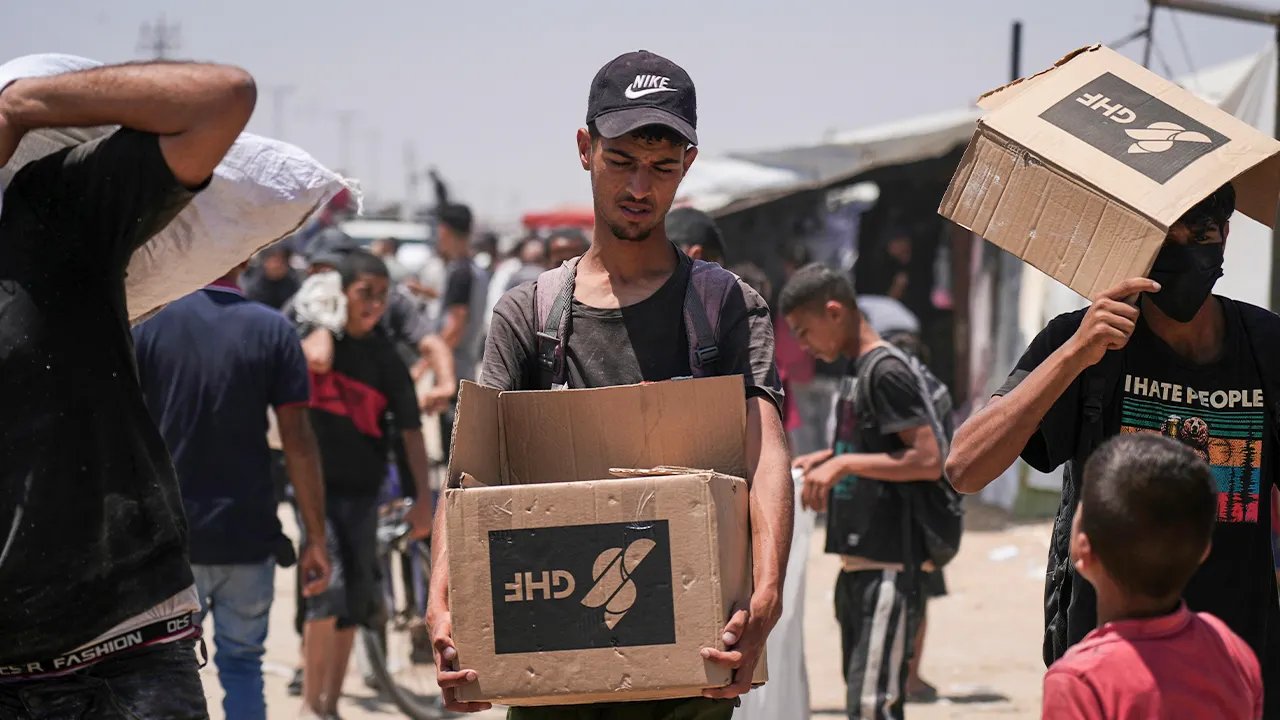
NEWYou can now listen to Fox News articles!
Negotiations to secure a 60-day ceasefire between Israel and Hamas seem to have hit an impasse amid hopes from top mediators, including President Donald Trump’s Middle East Special Envoy Steve Witkoff, that a deal can be reached soon.
There are several issues that remain major hurdles in securing lasting peace in the Gaza Strip and the return of all the hostages, according to multiple sources that Fox News Digital has spoken with.
But one of the top sticking points has reportedly been the question of aid to the Palestinians and who exactly should be distributing the direly needed support.
U.S. President Donald Trump hosts Israeli Prime Minister Benjamin Netanyahu for a dinner in the Blue Room of the White House on July 7, 2025, in Washington, DC. (Photo by Andrew Harnik/Getty Images)
TRUMP SAYS ‘VERY CLOSE’ TO SECURING ISRAEL, HAMAS CEASEFIRE, RETURNING HOSTAGES
«This is a complex political environment right in the middle of a ceasefire negotiation,» Chairman for the Gaza Humanitarian Foundation (GHF) Rev. Johnnie Moore told Fox News Digital. «I understand on the first night of the ceasefire negotiation, one of the primary issues that Hamas and their negotiators brought up was they wanted to see the elimination of the GHF.
«Which ought to tell you something,» he continued. «Hamas didn’t want 70 million meals of food in the Gaza Strip for the people they allege they care about – this is absurd.»
Following Israel’s near-three-month blockade on aid to the Gaza Strip, the GHF – a U.S. and Israeli-backed aid mechanism – was, in late May, permitted to initiate food delivery with the assistance of the Israel Defense Force (IDF) as a means to ensure food trucks were not overrun and ransacked by the Hamas terrorist group.
The GHF, which has faced stiff backlash for its divergence from traditional humanitarian assistance methods, has argued that its convoys have been far better secured from Hamas attacks than United Nations’ delivery trucks, and therefore ensured the aid has actually ended up in the hands of Palestinian civilians.
Hamas has long used humanitarian assistance as a means of control over Palestinians in the Gaza Strip and as a tool for recruitment, going so far as to threaten starving civilians from accepting GHF food aid for their families in late May, telling them they «will pay the price, and we will take the necessary measures.»
The GHF has delivered some 70 million meals to between 800,000 and 1 million Palestinians, Moore confirmed.
But reports have repeatedly surfaced claiming that Palestinians flocking to the four distribution sites have faced insurmountable dangers and on Friday the U.N. Human Rights Office said it believed nearly 800 people had been killed near aid sites.

Palestinians in Gaza get aid from the U.S. and Israel-backed Gaza Humanitarian Foundation. (Gaza Humanitarian Foundation)
US-BACKED GAZA AID GROUP LAUNCHES BOLD NEW SYSTEM TO DELIVER FOOD DIRECTLY TO FAMILIES
The office based in Geneva said it had recorded some 615 people were killed in the vicinity of GHF sites and 183 near other aid convoys, and according to spokeswoman Ravina Shamdasani, the majority of these deaths were caused by «gunshot injuries.»
The U.N. did not immediately respond to Fox News Digital’s questions about whether it was the IDF or Hamas that was on the firing end of the gun, and whether these deaths occurred as a direct result of civilians seeking aid, chaotic eruptions that ensued outside of distribution centers, or if these were deaths occurred amid the continued war as civilians were in the process of heading to distributions centers.
The IDF earlier this month said that following an investigation into civilian casualties reported at aid distribution sites, it had issued new orders to its South Command based on «lessons learned.»
The GHF this week announced a second phase in its aid delivery system that could lower the threats civilians face when seeking aid, by distributing supplies directly through community leaders across Gaza – meaning there could be less travel involved for civilians in need.
But the GHF also fervently rejects the U.N. death toll figures and Moore maintains that no deaths have occurred on or near their distribution sites.
«The U.N. is lying. They’re just lying. They’re taking statistics that originate from the Hamas-controlled Health Ministry in Gaza, and they’re sharing those statistics without any scrutiny at all,» Moore told Fox News Digital.

IDF soldiers fighting in the Netzarim Corridor in Gaza. (IDF Spokesman’s Unit)
ISRAEL RELEASES CONVERSATIONS WITH GAZA RESIDENTS AMID CRITICISMS OF AID DELIVERY SYSTEM
«We know Hamas has routinely lied about civilian death numbers from the beginning of this conflict. We know that Hamas doesn’t distinguish between the death of Hamas militants and between civilians, and…we know that from the very beginning of the operation of GHF, Hamas made an intentional decision that the best way to see the end of GHF was to say that our sites were these death traps,» he added.
The U.N., on the other hand, maintains that it vets its own informants and obtains evidence through «various reliable sources, including medical, human rights and humanitarian organizations.»
But critics of the U.N. continue to question its trustworthiness following the apparent discovery of at least nine employees of the United Nations Relief and Works Agency for Palestine Refugees (UNRWA), who were reportedly involved in the Oct. 7, 2023 Hamas attacks on Israel, which saw the death of some 1,200 Israelis and the abductions of another 250 – 50 of whom remain hostage.
Though Philippe Lazzarini, UNRWA Commissioner-General, terminated those employees in October 2024, there remains open hostility between the U.N. agency and Israel, and now the GHF.
Lazzarini, along with more than 200 other humanitarian organizations, has also personally called for the removal of the GHF from the Gaza Strip.
Moore accused the U.N. of employing «mafia»-like tactics by ganging up on the aid program despite the success it has seen by supplying millions of meals.
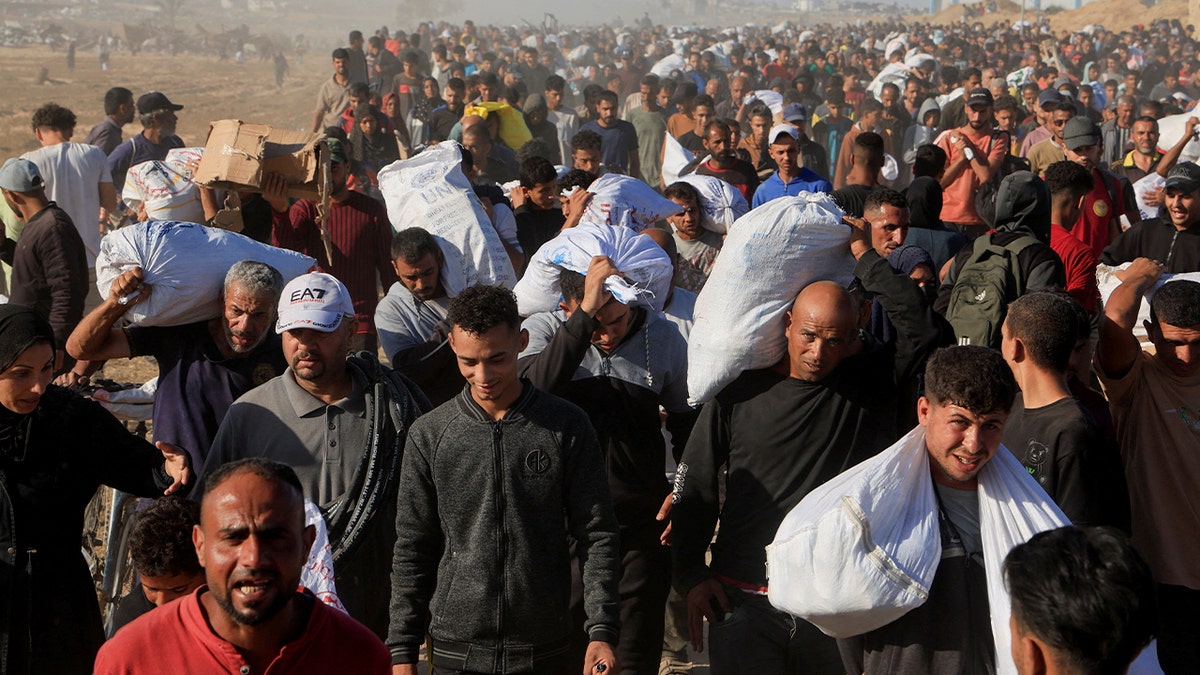
Palestinians carry aid supplies from the U.S.-backed Gaza Humanitarian Foundation, in Khan Younis, in the southern Gaza Strip, May 29, 2025. (REUTERS/Hatem Khaled)
COULD PRIVATE SECURITY CONTRACTORS BE THE ‘DAY AFTER’ SOLUTION IN GAZA?
«We want to work with these organizations, but instead of engaging with us, what they’ve been doing is they’ve been working behind the scenes to sabotage us,» Moore said. «There’s no other way to describe it. The U.N. is behaving like a mafia.»
While the U.N. has not officially called for the removal of the GHF, it has criticized the organization’s «militarized» approach to delivering aid, which is not viewed as acceptable by the Sphere Association, which sets the international standards for humanitarian aid.
Both the GHF and the U.N. have said more aid is not only needed, but it would help eliminate the intense security risks affiliated with obtaining humanitarian supplies.
«I have been very clear that the U.N. cannot do humanitarian work alone in Gaza, we need partners,» U.N. spokesman Stephane Dujarric told Fox News Digital. «All that we ask is that these partners operate under the globally accepted humanitarian principles of humanity, impartiality, neutrality and independence.»
Though both sides ultimately have the same goal, there appears to be an increasing impasse over how to provide stable aid for Palestinians who continue to live in extremely dire situations.
«My mission, and the mission of GHF is really, really simple. It’s just to feed people. And it should not be as controversial as it has been,» Moore said. «My interest has always been in the in the ‘day after’. We have to do both.»
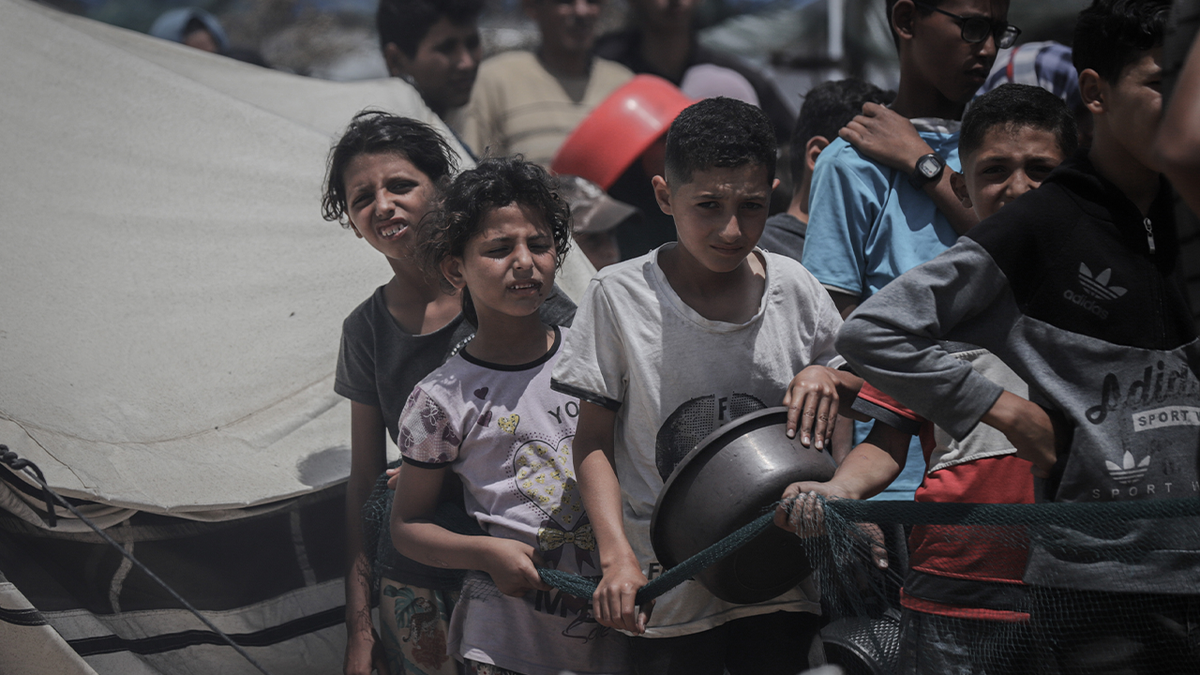
Displaced Palestinian children wait to receive a free meal from a charity food distribution center in Gaza City, northern Gaza, on Tuesday, May 27, 2025. (Ahmad Salem/Bloomberg via Getty Images)
CLICK HERE TO GET THE FOX NEWS APP
«We have to plan for the ‘day after’, and we have to address the emergency, and it’s time for the United Nations to stop playing political games,» he continued. «We can solve the problems together.
«But we have to make the decision to work together. GHF has already made that decision, and we’ve reiterated again and again and again that we want to work with the international community to reach these people. The decision is now theirs, and we’ll be here waiting, our hand extended,» Moore said.
INTERNACIONAL
La guerra Rusia-Ucrania: Europa empieza a analizar cómo responder a los ataques de Moscú
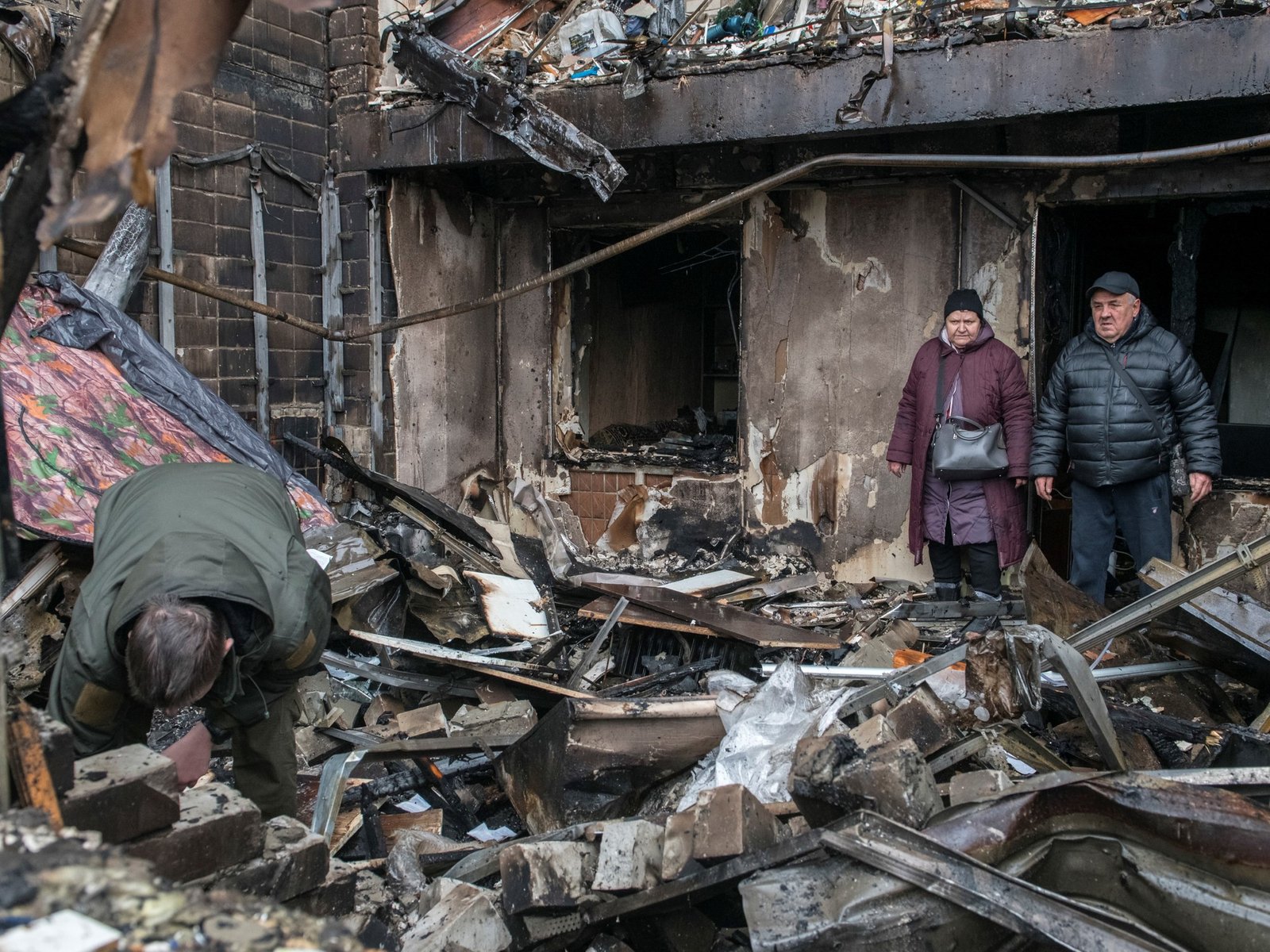
Europa siempre ha mirado a Rusia como se mira desde una fortaleza asediada a quien intenta asaltarla desde fuera, como en los asedios medievales. Durante años, los europeos han hablado siempre de ciberdefensa, de preparación para resistir ataques híbridos, de cómo podían proteger sus procesos electorales y sus medios de comunicación de las injerencias rusas y de las campañas de desinformación lanzadas desde Moscú. De cómo tratar a supuestos diplomáticos rusos que en realidad eran agentes de sus servicios secretos militares. Todas las ideas eran defensivas. Pero eso parece estar empezando a cambiar.
Según una información del diario Politico, que Clarín pudo confirmar con dos diplomáticos europeos, los gobiernos de la Unión Europea están empezando a estudiar no sólo cómo frenar los golpes rusos, sino también cómo empezar a devolverlos. Las ideas cubren varios flancos, pero las más citadas serían las de lanzar ciberataques contra objetivos sensibles de la industria militar y la economía rusa hasta atribuir sin pudor a Moscú sus ataques híbridos en Europa para castigar a Rusia con más sanciones, pasando por lanzar ejercicios militares por sorpresa.
El cambio de mentalidad en Europa se debe a que Moscú parece estar poniendo a prueba la resistencia de los europeos y lo que pueden aceptar o no. Pero algunos episodios parecen haber colmado en vaso. Cuando a principios de noviembre decenas de drones, algunos de carácter militar, sobrevolaron durante varias noches consecutivas aeropuertos, centrales nucleares o bases militares belgas, empezaron a encenderse muchas alarmas. Alemania y Reino Unido enviaron material militar para hacer frente a esos drones, que no volvieron. Algunos habían pasado a menos de dos kilómetros en línea recta de la sede de la OTAN en Bruselas.
Esos drones también han sobrevolado ciudades como Estocolmo o Copenhague y han traspasado las fronteras de Polonia o Rumanía en las últimas semanas. Una línea de ferrocarril clave en la conexión entre Polonia y Ucrania fue volada y aviones de combate rusos violan cada vez con más frecuencia el espacio aéreo de países como Estonia, Lituania y Letonia.
Algunos funcionarios empiezan a hablar abiertamente del asunto. El vice ministro de Defensa alemán Florian Hahn dijo la semana pasada a ‘Welt TV’ que “en conjunto, Europa y la Alianza Atlántica deben preguntarse a sí mismas cuánto tiempo más están dispuestas a tolerar este tipo de guerra híbrida y si sería conveniente que consideráramos convertirnos en más activos en este asunto”.
Los europeos han visto en los últimos años cómo Rusia ha financiado a partidos políticos que abogan por la destrucción de la Unión Europea como estructura institucional (como la extrema derecha francesa de Marine Le Pen, que recibió créditos de bancos rusos controlados por el Gobierno de Vladimir Putin) o cómo, según varios servicios secretos, Rusia influyó para alterar ilegalmente el resultado de elecciones legislativas en Rumanía y Moldavia y que ganaran candidatos afines a Moscú.
Algunos funcionarios consideran que la mejor forma de tratar con Rusia es ser firme y plantarle cara, no achicándose. Europa no quiere una guerra contra Rusia, pero el aumento de estas operaciones en los últimos meses empieza a movilizar a los gobiernos. Por eso la OTAN decidió que reforzará las defensas contra drones y las defensas antiaéreas en su flanco oriental, después de que el primer ministro polaco Donald Tusk dijera que daría la orden de derribar cualquier aparato ruso que viole su espacio aéreo.
Tusk es de los que más medidas han tomado. La semana pasada movilizó a 10.000 soldados para proteger las conexiones con Ucrania, esencial para que los europeos sigan enviando armamento a Kiev. Y acusó a Moscú de lanzar una campaña de “terrorismo de Estado”.
Italia apunta por ejemplo a la creación de una fuerza europea de ciberdefensa (y ciberataque si fuera necesario) de 1.500 expertos, que contaría también con personal militar especializado en inteligencia artificial.
INTERNACIONAL
Music City Miracle: A look at an unusually contentious election in the Volunteer State
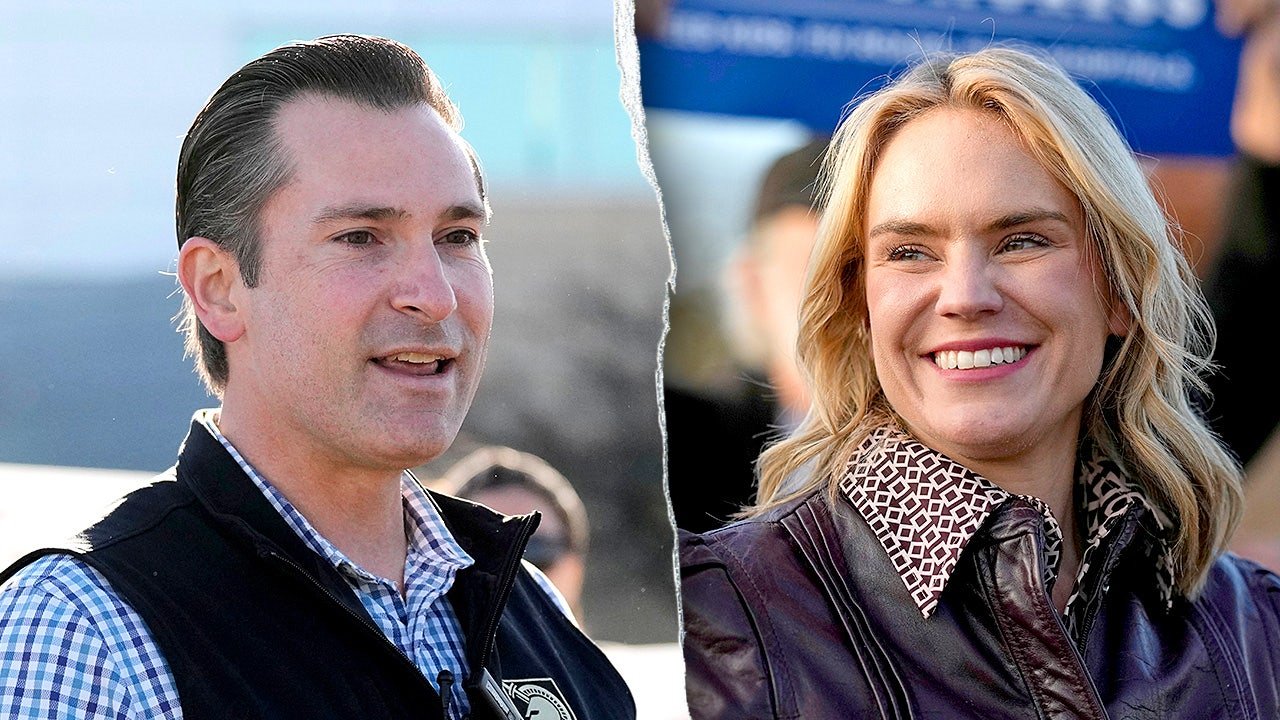
NEWYou can now listen to Fox News articles!
We’ll know Wednesday morning if a special election in Tennessee is truly a referendum on country music, pedal taverns and bachelorettes.
Or, if we can divine a deeper political meaning from the results of the special election in Tennessee’s 7th Congressional District.
Democrat Aftyn Behn is trying to tip the scales in favor of her party in a district which President Trump carried by about 20 points and former Rep. Mark Green, R-Tenn., won by a similar percentage last fall.
Behn faces GOPer Matt Van Epps. It’s a Republican district. But political observers are watching the race to gauge potential weakness by President Trump, a softness in the Trump coalition, issues with the Republican brand or early indications of a possible blue wave in the 2026 midterms.
DEMOCRATS, REPUBLICANS GO ALL IN ON FINAL 2025 CONGRESSIONAL BALLOT BOX SHOWDOWN
Depending on who you ask, the race for Tennessee’s 7th congressional district – between Republican nominee Matt Van Epps, former state Department of General Services, and Aftyn Behn, a Democratic state representative – may be headed for a photo finish. (George Walker IV/AP Photo)
It was Behn who proclaimed that she abhorred Nashville several years ago. «I hate the bachelorettes, I hate the pedal taverns, I hate country music. I hate all the things that make Nashville apparently an ‘it city,’» complained Behn.
About all Behn left out in her animus toward Music City was dissing The Grand Ole Opry, hot chicken and Goo Goo Clusters. But if voters go goo goo over Behn Tuesday, Republicans face a cluster of another sort. A Behn victory may signal major problems for Republicans and President Trump heading into the midterms.
Behn is characterized as the «AOC of Tennessee,» a reference to progressive Rep. Alexandria Ocasio-Cortez, D-N.Y. Republicans have been sure to boomerang that against Behn, suggesting she’s not in tune with the district, leans too far to the left and is closer to the liberal values of New York or Los Angeles than Nashville. Republicans believe Behn is just a bad fit for Nashville. Kind of like having Bad Bunny perform at the Ryman Auditorium.
«It shouldn’t even be close. But it is,» mused Rep. Tim Burchett, R-Tenn., on Fox.
So Republicans are pouring in money to protect the seat. Democrats are pouring in money to steal the seat. If Democrats pull off the upset, the party should uproot the goalposts at FirstBank Stadium in downtown Nashville and dump it in the Cumberland River. Kind of what Vanderbilt fans did last year when the Commodores upset number one-ranked Alabama.
Let’s explore what a Behn win might mean for Republicans. It could indicate that voters are tiring of President Trump. Or that the GOP brand is toxic. Or perhaps it’s the continuation of a trend which Democrats enjoyed this fall: near blowout wins by New Jersey Gov.-elect Mikie Sherrill and Virginia Gov.-elect Abigail Spanberger.
But there’s a downside for Democrats. Yes. They may flip the seat. But a win may also show that the party is tilting more to the left. It would be hard to argue with success if Behn prevails, regardless of her progressive streak. But this may give other liberals ideas that they can win in other red or purple districts. That may work against Democrats – especially since every Republican, except President Trump – has highlighted the left-wing politics of New York City Mayor-elect Zohran Mamdani.
TRUMP MAKES 11TH-HOUR PLEA FOR MATT VAN EPPS OVER AFTYN BEHN, WHOM HE CLAIMS ‘HATES CHRISTIANITY’
Democrats probably need to run more centrist candidates in purple areas to regain control of the House. A Behn victory could open the floodgates for a host of progressive candidates in competitive House districts nationwide. Behn’s message – or that of Ocasio-Cortez or Mamdani – won’t work in most places where Democrats need to be successful to seize control of the House.
But what if Republicans hold the seat and Van Epps wins?
It probably depends by how much.
Yes, there were five special elections in 2017 – the first year President Trump was originally in office – which Democrats made competitive. All were closer than they should have been. But Democrats didn’t win any of them. Still, astute political observers suggested there was unpopularity with the president and the GOP agenda. Democrats won 41 seats and gained control of the House in the 2018 midterms.
So, even if Van Epps wins, examine the margin. And if Behn wins, see if Republicans downplay it because it was a special election and the customary electorate just doesn’t turn out for special elections. Especially one wedged between Thanksgiving and Christmas.
If Republicans hold the seat, the GOP will argue this was a repudiation of a leftist like Behn and someone who was out of step. They will also suggest that it’s a GOP seat and Republicans should win anyway. That’s what happened earlier this year when there was consternation before two Florida special elections. But Reps. Randy Fine, R-Fla., and Jimmy Patronis, R-Fla., both won in March.

If Van Epps wins, one must still pay attention to the margin. The seat, last held by former Rep. Mark Green, broke for President Trump by over 20% in 2024. (Nicole Hester/The Tennessean/USA TODAY NETWORK via Imagn Images)
Here’s another factor which bears watching: the message the press corps and political observers glean from the election results. After all, special elections are always special. It’s natural for analysts and journalists to search for particular meanings or signposts in these contests. Such was the case with the off-year elections in New Jersey, Virginia and New York City. Sometimes these observations are spot-on. Other times, they mean nothing. If anything, there is a tendency to over-illuminate the outcomes of these contests. They are moments in time. Kind of like listening to a few bars of a song. Maybe it tells you a lot about the song. Maybe not.
House Republicans could well freak out if Behn is victorious. There’s lots of grumbling among Republicans. Some are frustrated by how their leadership handled the government shutdown. And others could follow Mark Green and Rep. Marjorie Taylor Greene, R-Ga., and hit the exits early.
This is a fragile time for House Republicans. That’s one reason why a flip of this seat could mean a little bit more.
DEM HOUSE HOPEFUL GETTING YANKED FROM GOVERNOR’S OFFICE DURING ATTEMPTED SIT-IN GOES VIRAL AHEAD OF ELECTION
Still, it’s rare to flip seats in House special elections. Former Rep. Don Cazayoux, D-La., won a special election in a red district in Louisiana in 2008 after former Rep. Richard Baker, R-La., resigned. But current Sen. Bill Cassidy, R-La., then won that seat in the general election and served in the House before moving to the Senate.
Former Rep. Mayra Flores, R-Texas, flipped the seat held by former Rep. Filemon Vela, D-Texas, in 2022. But she lost reelection that fall.
Former Rep. Mike Garcia, R-Calif., won a special election in 2020 after former Rep. Katie Hill, D-Calif., resigned just months into office. Garcia held the seat until Rep. George Whitesides, D-Calif., defeated him a year ago.
Former Rep. Charles Djou, R-Hawaii, won a special election in Hawaii in 2010 against two Democrats – former Rep. Colleen Hanabusa, D-Hawaii, and Rep. Ed Case, D-Hawaii. But Democrats got the seat back in 2012.
Former Rep. Mary Peltola, D-Alaska, won a special election in 2022 to flip Alaska’s at-large district from red to blue following the death of late Rep. Don Young, R-Alaska. Young held the seat for nearly 50 years. But Rep. Nick Begich III, R-Alaska, defeated Peltola last year.

Just because seats are won in special election upsets, doesn’t mean they’ve permanently fallen to the other party. Rep. Nick Begich III, R-Alaska, who unseated his Democratic predecessor, former Rep. Mary Peltola – herself a special election victor – is a prime example. (Bill Clark/CQ-Roll Call, Inc via Getty Images)
In short, even if someone flips a seat, it’s rare that they have the seat for long. Often, only through the next regular election.
So a word of caution as you evaluate the election results on Tuesday night. If Republicans hold the seat, that may be expected. If Democrats flip the seat, some will proclaim it’s the second coming of the Music City Miracle.
CLICK HERE TO DOWNLOAD THE FOX NEWS APP
But frankly, it’s probably not.
congress,elections,tennessee,nashville
INTERNACIONAL
Muslim dad, sons allegedly drowned teen over ‘Western’ lifestyle, refusing to wear headscarf

NEWYou can now listen to Fox News articles!
Dutch prosecutors demanded Friday that a Muslim father and his two sons face up to 25 years in prison for allegedly drowning an 18-year-old family member because they believed her «Western» behavior was bringing shame to the family.
The body of Syrian woman Ryan Al Najjar was found submerged in a lake with hands and feet bound tightly on May 28, 2024, near Joure in northern Netherlands, six days after disappearing, according to authorities. Officials arrested her father and two brothers, then aged 22 and 24, and charged them in connection with her killing, which prosecutors said likely happened on May 22.
«They saw Ryan as a burden that had to be removed,» the Public Prosecution Service said Friday. «Just because she was a young woman who wanted to live her own life.»
Authorities said her male relatives, who come from what they described as a «strict» Islamic family, allegedly killed her after believing she was «behaving too Western in the eyes of her family.» Al Najjar was reportedly targeted after refusing to wear a headscarf in public-like settings.
MOTHER SAYS ALLEGED STALKER WHO KILLED HER DAUGHTER SHOULD BE TRIED AS AN ADULT
Ryan Al Najjar was murdered in May 2024 in the Netherlands. (National Police Corps of the Netherlands)
«The immediate cause of her death appears to be a live video on TikTok, showing Ryan without a headscarf and wearing makeup,» prosecutors said Friday. «The video seriously embarrasses the family, according to their posts, as it does not fit within their traditional views.»
«Once the suspects were aware of the video, they started looking for Ryan,» the authorities added. «According to the Public Prosecution Service, her brothers visited her in Rotterdam and convinced her to come along to a remote location the night before her murder. She was taken to Knardijk, where their father joined. There she was killed.»
Local media NL Times identified the brothers as Mohamed Al Najjar and Muhanad, and their 53-year-old father as Khaled. All three were charged with murdering the young woman, while their father was accused of orchestrating the killing before likely fleeing to Syria, prosecutors said.
CHARLOTTE TRAIN STABBING SUSPECT’S BROTHER SAYS KILLING COULD HAVE BEEN ‘PREVENTED’

Courtroom sketch of suspects Mohammed Al N. (R) and Muhanad Al N. during a hearing in court. The two brothers and their father, Khaled Al N., are suspected of murdering their sister and daughter, Ryan Al Najjar. (Hollandse Hoogte/Shutterstock)
Investigators say Al Najjar was taken to a remote park where «no one for miles around could have heard her» cries for help. Evidence showed signs of strangulation and drowning, and approximately 60 feet of tape had been used to bind her before she was thrown into the water alive. Prosecutors reported that Khaled’s DNA was also found under his daughter’s fingernails, suggesting he was present during the killing.
CLICK HERE TO DOWNLOAD THE FOX NEWS APP

Ryan Al Najjar’s body was found in the Oostvaardersplassen nature reserve in Lelystad, Netherlands. (Pierre Crom)
«[Khaled] fled to Syria immediately after the murder and left his sons to take the blame. Cowardly,» the Public Prosecution Service wrote in a statement Friday, according to NL Times. «Khaled has completely destroyed his family.»
Dutch authorities added that extraditing Khaled may be difficult because he married a woman in Syria since Al Najjar’s death, the outlet reported.
The Public Prosecution Service has recommended a 25-year prison sentence for the father and 20 years for each of the two brothers.
The court is scheduled to issue its ruling on Jan. 5.
Fox News Digital reached out to the Public Prosecution Service for more information.
europe,homicide,middle east,crime,syria,islam

 INTERNACIONAL3 días ago
INTERNACIONAL3 días agoTrump promete “suspender permanentemente la migración de todos los países del tercer mundo”

 CHIMENTOS2 días ago
CHIMENTOS2 días agoWanda Nara involucrada en el escándalo de su abogado, Payarola, contó toda su verdad: “Yo fui…”

 POLITICA2 días ago
POLITICA2 días agoPatricia Bullrich lleva la disputa por el fútbol al Congreso y pone bajo la lupa a la conducción de la AFA















